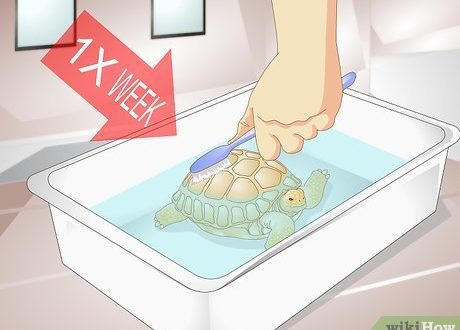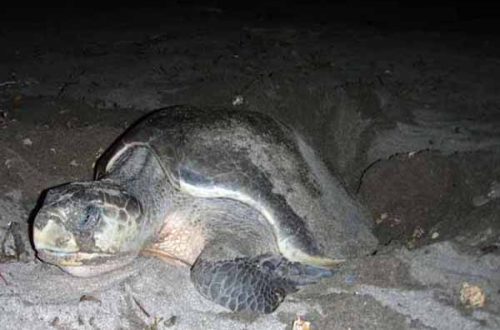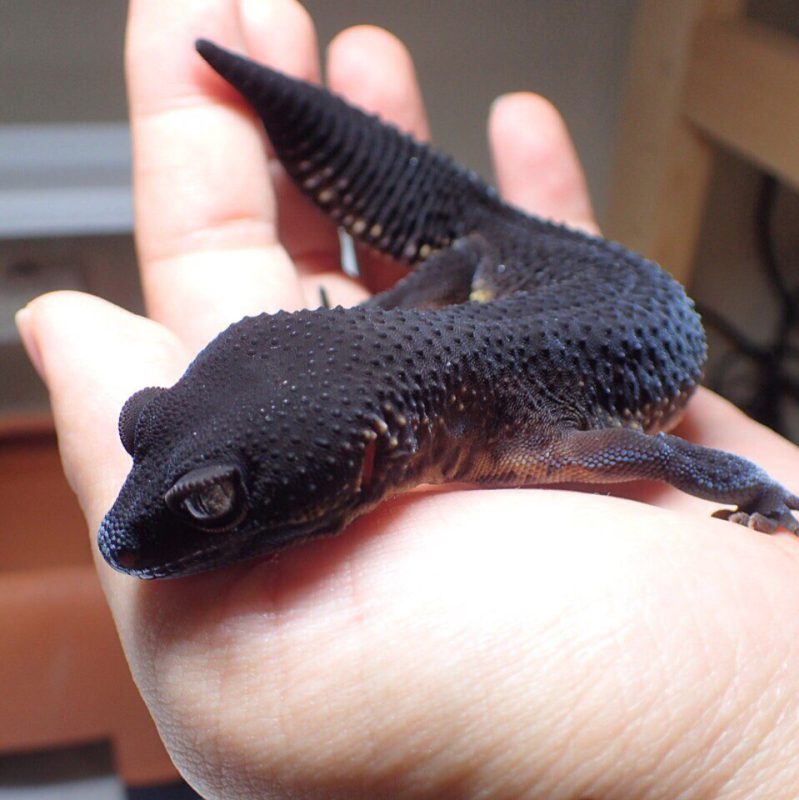
Eublefar morphs
If you have ever been interested in eublefars, then you have probably met strange names “Mack Snow”, “Normal”, “Tremper Albino” and other “spells” in pet stores or on thematic sites. We hasten to reassure: every newcomer wondered what these words were and how to understand them.
There is a pattern: the name corresponds to the specific color of the gecko. Each color is called a “morph”. “Morpha is the biological designation of a population or subpopulation of the same species that differ from each other in, among other things, phenotypes” [Wikipedia].
In other words, “morph” is a set of certain genes responsible for external signs that are inherited. For example, color, size, eye color, distribution of spots on the body or their absence, etc.
There are already more than a hundred different morphs and they all belong to the same species “Spotted leopard gecko” – “Eublepharis macularius”. Breeders have been working with geckos for many years and are still developing new morphs to this day.
Where did so many morphs come from? Let’s start from the very beginning.
Morph Normal (Wild Type)
In nature, in the natural environment, only such a color is found.
Babies of Normal morph Eublefar resemble bees: they have bright black and yellow stripes all over their body. Brightness and saturation may vary.
Adult individuals resemble leopards: on a pure yellow background from the base of the tail to the head there are many, many dark round spots. The tail itself may be gray, but with many spots. Brightness and saturation also vary.
Eyes at any age are dark gray with a black pupil.
Together with the natural morph, from which the rest originated, there is a basic component of the entire subset of morphs. Let’s describe this base and show how they look.
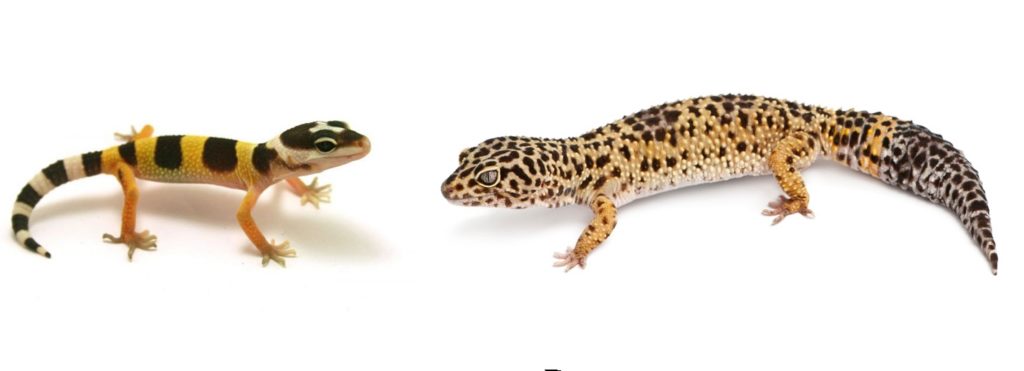
Albino Dip
The very first morph of albinism. Named after Ron Tremper, who bred it.
Eublefars of this morph are much lighter.
The babies are yellow-brown, and the eyes are distinguished by shades of pink, light gray and blue.
With age, brown spots appear from the dark stripes, the yellow background remains. The eyes may also darken slightly.
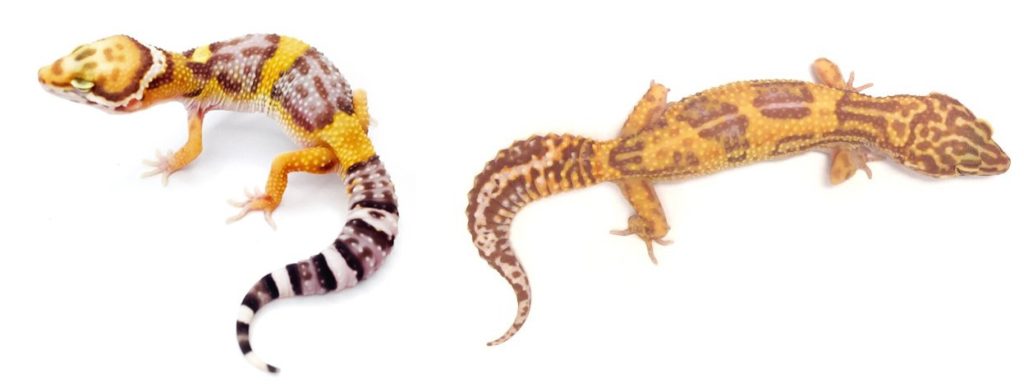
Bell Albino
This morph of albinism was obtained by Mark Bell.
Babies are distinguished by rich brown stripes along the body with a yellowish background and light pink eyes.
Adults do not lose saturation and remain yellow-brown with light pink eyes.
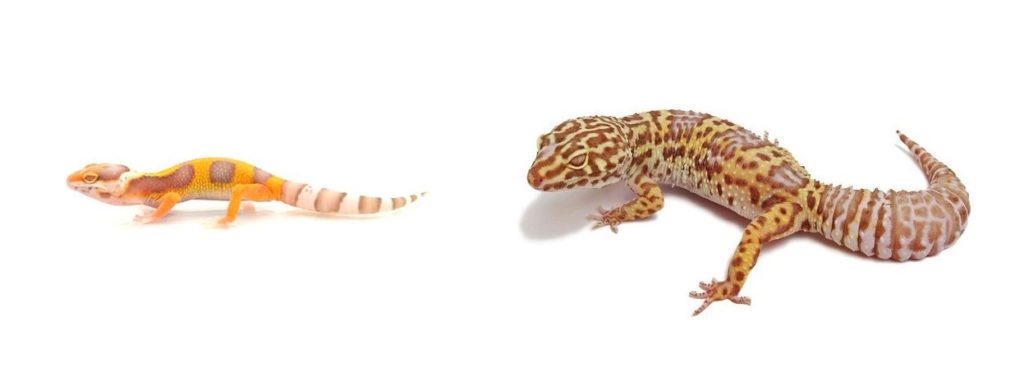
Rainwater Albino
A rare morph of albinism in Russia. Similar to Tremper Albino, but much lighter. The color is more delicate shades of yellow, brown, lilac and lighter eyes.

Murphy Patternless
The morph is named after breeder Pat Murphy.
It is unique in that with age, all spots disappear in this morph.
Babies have a dark background of brown shades, the back is lighter, starting from the head, dark spots go all over the body.
In adults, the mottling disappears and they become a single color that varies from dark brown to gray-violet.

Blizzard
The only morph that does not have spots from birth.
The babies have a dark gray head, the back may turn yellow, and the tail is gray-purple.
Adults can bloom in different shades from light gray and beige tones to gray-violet, while having a solid color throughout the body. Eyes of different shades of gray with a black pupil.
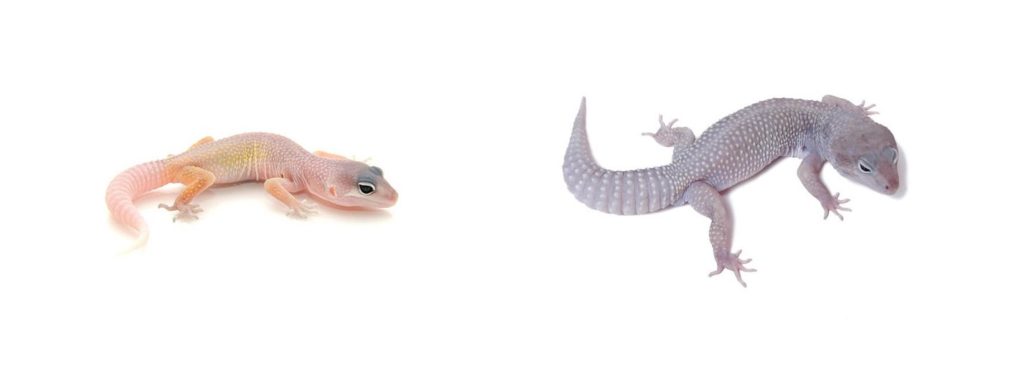
Mack Snow
Just like the Normal morph, this morph is loved for its color saturation.
Babies look like small zebras: black and white stripes all over the body, dark eyes. The real zebra!
But, having matured, the dark stripes go away, and the white begins to turn yellow. Adults look like Normal: many spots appear on a yellow background.
That is why Mack Snow cannot be outwardly distinguished from Normal in adulthood.
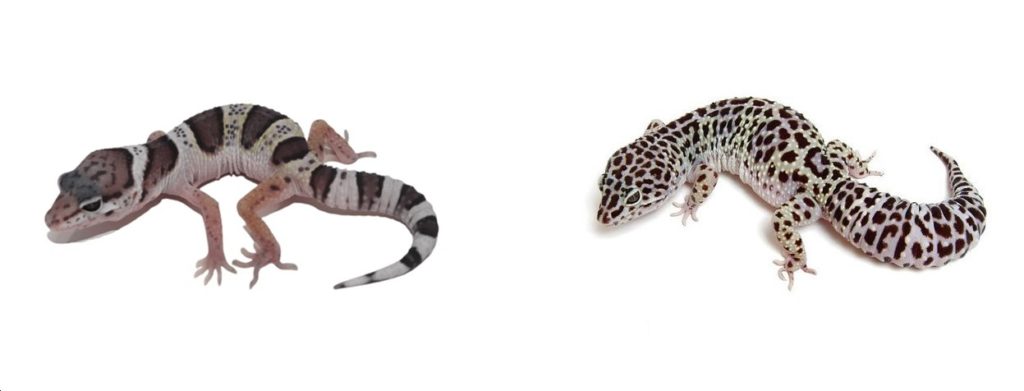
White&Yellow
A new, recently bred morph.
The babies are lighter than Normal, bright orange blurry rims around the dark stripes, sides and front paws are whitened (have no color). In adults, mottling may be rarer, morphs are most likely to have paradoxes (dark spots that suddenly appear that stand out from the general color), paws may turn yellow or orange over time.
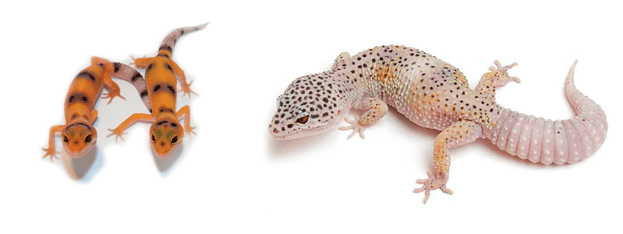
Eclipse
A distinctive feature of the morph is completely shaded eyes with a red pupil. Sometimes the eyes can be partially painted over – this is called Snake Eyes. But it’s important to keep in mind that Snake Eyes isn’t always Eclipse. Here it can help in determining the bleached nose and other parts of the body. If they are not there, then Eclipse is not there either.
Also the Eclipse gene gives smaller specks.
Eye color can vary: black, dark ruby, red.
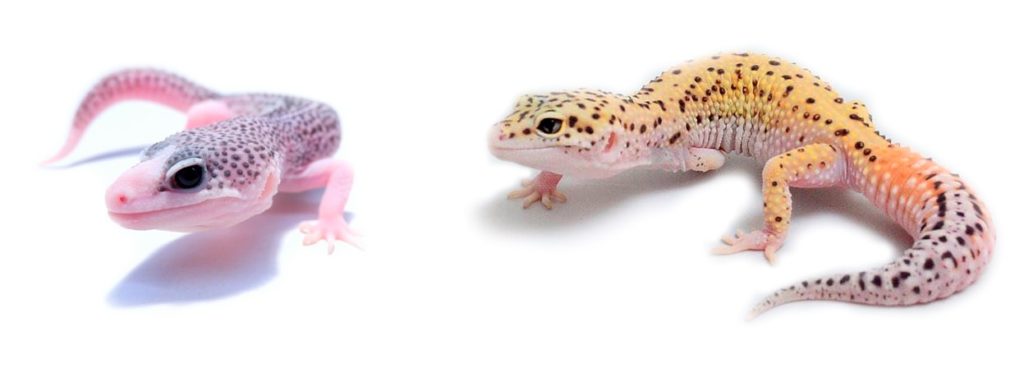
Tangerine
The morph is very similar to Normal. The difference is rather arbitrary. Outwardly, babies are difficult to distinguish without knowing the morph of their parents. In adults, Tangerine, in contrast to Normal, is orange in color.
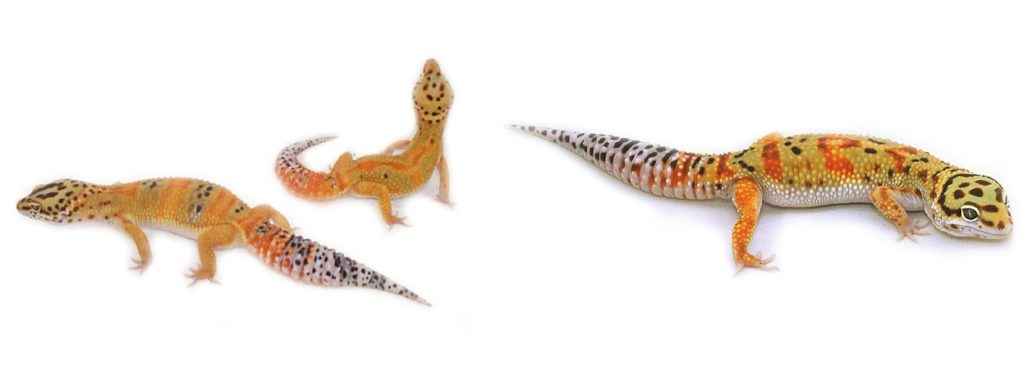
Hypo (Hypomelanistic)
Babies are no different from Normal, Tangerine, so you can determine this morph only after waiting 6-8 months until the recoloring passes. Then, in Hypo, a small number of spots can be noted on the back (usually in two rows), on the tail and head in comparison with the same Tangerine.
There is also a form of Syper Hypo – when spots are completely absent on the back and head, only on the tail remain.
In the Internet community, black leopard geckos Black Night and bright lemon geckos with crystal eyes Lemon Frost are of great interest and many questions. Let’s figure out what these morphs are.
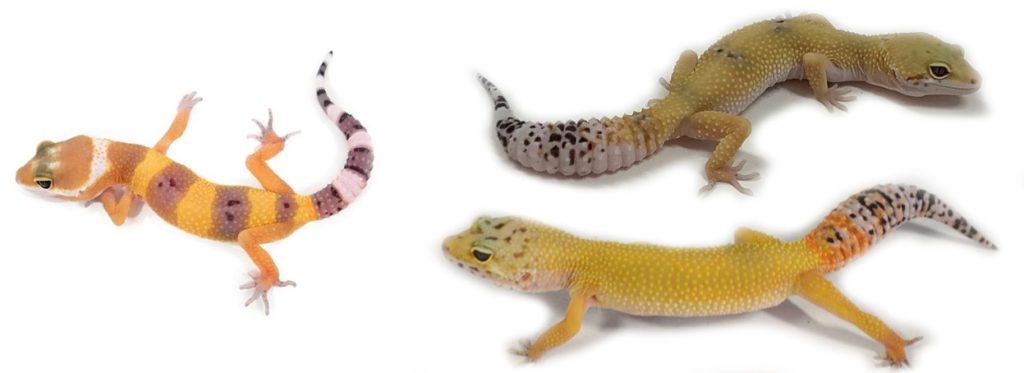
Black Night
You will not believe! But this is the usual Normal, just very, very dark. In Russia, these eublefaras are very rare, so they are expensive – from $ 700 per individual.
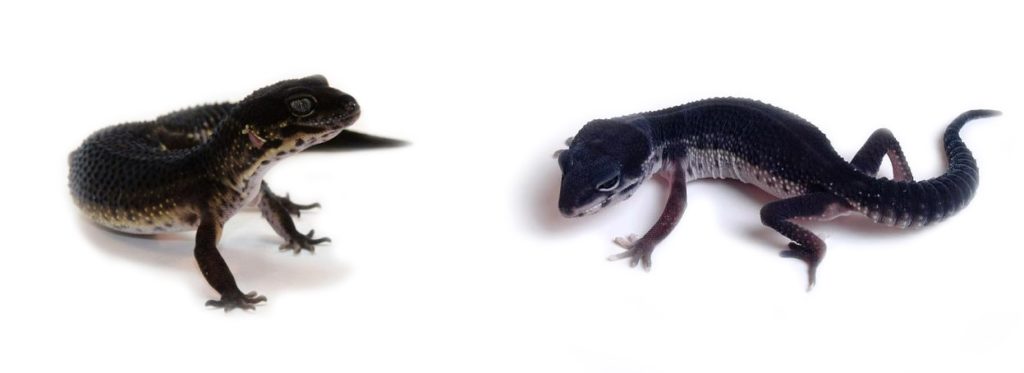
Lemon Frost
The morph is distinguished by its brightness: bright yellow body color and bright light gray eyes. Released recently – in 2012.
Unfortunately, for all its brightness and beauty, the morph has a minus – a tendency to develop tumors on the body and die, so the lifespan of this morph is much shorter than that of others.
It is also an expensive morph, there are already few individuals in Russia, but it is important to understand the risks.
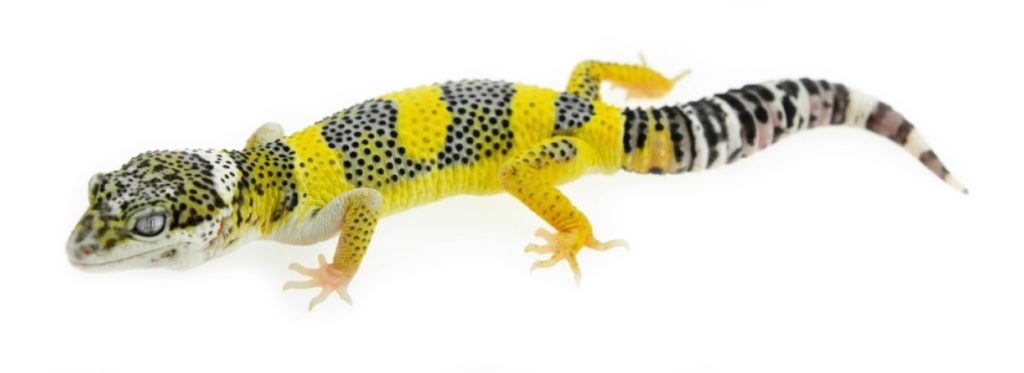
So, the article lists only a small base of morphs, from which you can get many interesting combinations. As you understand, there is a huge variety of them. In the following articles, we will figure out how to care for these babies.



